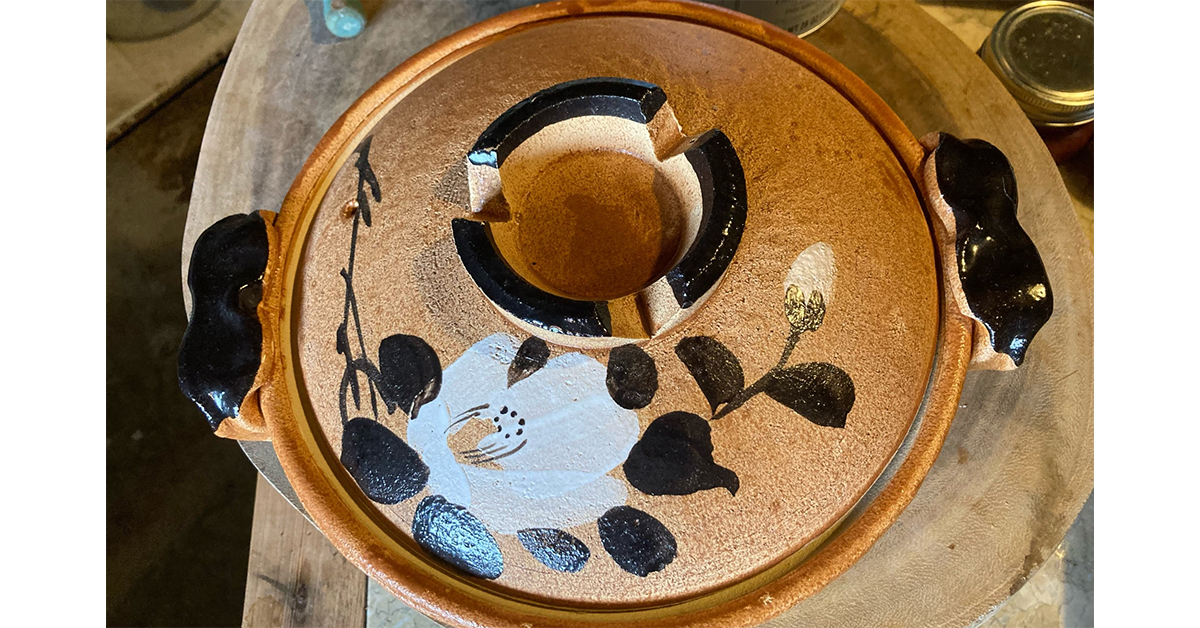by D. Leilehua Yuen
Here, I share my most unusual experience with nabe, at least, what our Japanese hosts said was nabemono. Perhaps it was a specialty of that bar.
We had been performing and teaching in Yokohama, and our Japanese hosts took us and some friends to their favorite bar. The bar, and the alley it was in, were straight out of my father’s war-time reminiscences. The rainy pavement reflecting the glow of the red lanterns, noren swaying gently as patrons passed in and out. Walking up the creaky wooden steps. . . The “girlie” posters in the bar looked as if they had been there since my father’s day.
We squeezed in and sat at a high table, two Hawaiians, and five Japanese all crowding in, drawing curious stares. We decided to order nabe to share. We chose beef heart nabe.
Our beers came first. About halfway through the second beer, a little portable stove was set on our table with an iron pot of broth. When it came to a boil, about another beer later, the waitress dropped in a half beef heart. It was frozen. As it defrosted, the broth began to seethe around the edges of the heart, and bubble through the large veins. One of our party poked at it with his hashi, and when it was defrosted waved to the waitress.
After another round of beers, she began bringing assorted vegetables which were added to the pot. After the round was finished, the pot held an island of beef heart surrounded by vegetables. Individual bowls were set in front of us and our friend with the hashi produced a spoon as well and dished chunks of heart, tender vegetables, and scoops of broth out for us. It was a memorable and convivial evening.
I have never had nabe like that before or since! I miss our friends, and hope to be able to return and enjoy more of that special nabe! Meanwhile, I shall do my best and try to cook in a way that honors my Christmas present, a beautiful vintage donabe (土鍋).
Nami, over at JustOneCookbook.com has excellent nabe recipes and also gives detailed instructions for the care and use of a traditional donabe.
I have had nabemono which was served community style, with a simmering donabe full of broth in the center of the table and platters of the foods to go in it arranged beside. I also have had nabe which was arranged completely in the bowl which was then simmered.
If you make community-style nabemono, it is helpful to remember the following:
Put flavorful ingredients in first. Followed with things that take a long time to cook, such as root vegetables and the thick parts of cabbages. When the vegetables are partly cooked, add any noodles, tofu, and other things that you want to have absorb the flavors. Add proteins such as thinly sliced meats, fish, or eggs, and tender vegetables last.
You’ll want to eat everything that has been cooked in one batch, and then skim the broth, before setting in the next batch.
Nabemono Broth
My favorite broth is miso-based. Feel free to adjust to your taste.
- 6 cups chicken or turkey broth
- 1/2 cup mirin
- 1 inch ginger, finely minced
- 3 teeth garlic, finely minced
- 1/2 cup your favorite miso
Simmer everything except the miso together about 5 minutes. Put the miso in a large cup or small bowl. Scoop a little broth into the miso and stir well. Keep adding broth and stirring a little at a time until the miso will pour easily. Next, slowly pour it into the broth while stirring. Simmer another five minutes and the broth is ready to add your other ingredients!


